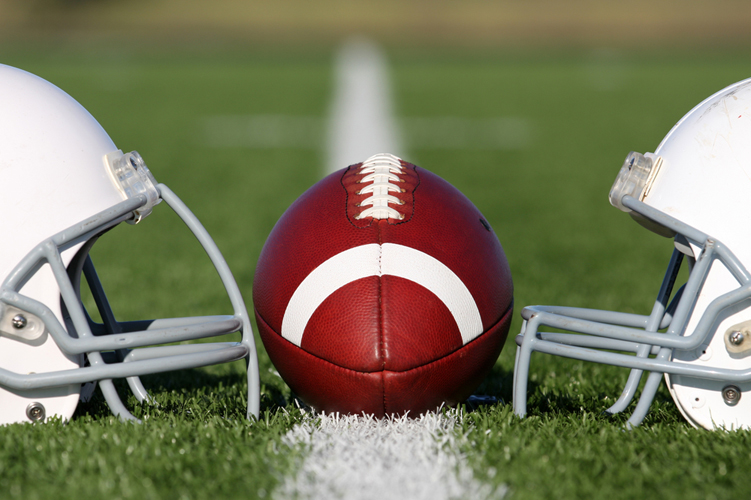The Determinator
Created on 28 Nov 2015
Intelligent football that can figure out who's using it!
A smart football (American) that uses physical information (rotation speed, force, etc) and machine learning to determine who threw the ball. Will also include features to track how far it was thrown, and leds on the outside that light up green or red according to the quality of throw


Jordan Safer
28 Nov 2015, 5:14 p.m. EST
General framework for how the design would come together is in place. One ball would have 2 bladders inflate in each end and a 3D printed or otherwise fabricated casing would protect the electronics (and also protect the bladders from the electronics) in the interior. Electronics would include some combined accelerometer/gyroscope device, assuming we don't invest in this gyroscope: http://www.analog.com/en/products/mems/mems-gyr...
Jordan Safer
28 Nov 2015, 5:19 p.m. EST
Some potential sources/parts:
http://www.amazon.com/Pro-Impact-Speed-Replacem...
https://www.youtube.com/watch?v=Xzy0CECzBNg
Jordan Safer
10 Jan 2016, 12:46 p.m. EST
First meeting on campus today, we're putting together a list of goals for the project, and eventually putting together a timeline so we can divide up roles and set deadlines more effectively.
Jordan Safer
10 Jan 2016, 1:04 p.m. EST
Project Objectives:
1. Wireless communication mechanism -- XBee configurations
2. Access Altitude meter/IMU data wirelessly with arduino
3. Access Altitude meter/IMU data wirelessly without arduino (if possible)
4. Wire up components nicely
5. Package device into football
6. Figure out if LEDS can be added nicely
7. Begin machine learning
a. Who threw it

Anand Kapadia
10 Jan 2016, 1:09 p.m. EST
b. If it was caught
c. Quality of throw
8. Make it look really nice

Anand Kapadia
28 Nov 2015, 7:16 p.m. EST
Key sensors that would be needed are an accelerometer, gyroscope (or an imu), arduino (lillypad or mini?), and some sort of wireless communication device such as an xbee or bluetooth module. If it becomes too difficult to place the arduino into the football, we can use xbees to communicate wirelessly between a computer and the football.

Anand Kapadia
10 Jan 2016, 1:11 p.m. EST
Timeline
Sunday:
--XBee communicationsGet IMU/Altitude meter communication running
--Finish electronics part besides soldering and packaging into a football (do steps 1,2,3)
--Late Sunday: some planning for packaging in the football, check the bladder situation
Sunday:
--XBee communicationsGet IMU/Altitude meter communication running
--Finish electronics part besides soldering and packaging into a football (do steps 1,2,3)
--Late Sunday: some planning for packaging in the football, check the bladder situation
Jordan Safer
10 Jan 2016, 1:12 p.m. EST
Monday:
--Get everything together for the football
--Get the parts into the football
--Verify integrity of communications (maybe make a simple program that writes out results from football data) .
--Get everything together for the football
--Get the parts into the football
--Verify integrity of communications (maybe make a simple program that writes out results from football data) .
Jordan Safer
11 Jan 2016, 10:36 a.m. EST
We made good progress on day 1. After getting the parts, Anand started things off by soldering pins onto the boards which needed them without any hiccups, and we started some experimentation with the footballs.
We started off deflating the footballs, untying the laces, and removing the bladders they had inside. We then experimented replacing the original bladder from a football with either 2 cone shaped bladder each in one end, or 2 normal football bladders running in parallel.
Jordan Safer
11 Jan 2016, 10:40 a.m. EST
The idea would be to pin our sensors between the two bladders. However, after inflating the bladders in the different designs, it became clear neither design was ideal, since the cone shape bladders were significantly lighter, and resulted in a very light football, and having two full-sized bladders nearly doubled the weight of the ball.
We decided to settle for only one full size bladder (as things had started) and place the sensors in ends of the ball.
Jordan Safer
11 Jan 2016, 10:44 a.m. EST
Later in the evening, we split into groups to work on configuring all the electronics and CADing up a design for cone-shaped vehicle to carry the electronics within the football.
We ran into a problem with the electronics, when it was noticed that we had a 5V arduino mini pro as our microprocessor, but all of our other components were 3.3v. Given that we needed to fit the components in a small space, it would be difficult to find a reasonable fix.

Anand Kapadia
10 Jan 2016, 1:17 p.m. EST
Thursday:
—Touch Up
Friday:
—Present
—Touch Up
Friday:
—Present

Anand Kapadia
10 Jan 2016, 1:17 p.m. EST
Tuesday:
—Code for demo
—Machine Learning code Wednesday:
—Machine Learning
—Touch Up
—Code for demo
—Machine Learning code Wednesday:
—Machine Learning
—Touch Up
Jordan Safer
11 Jan 2016, 10:47 a.m. EST
Luckily, we were able to run the arduino off of only 3.3V, so crisis averted. We successfully wired up the arduino, Xbee, and IMU and wirelessly transmitted data from the IMU over to the computer. We tried testing range a bit, but because of walls in the building, we couldn't get a good test.